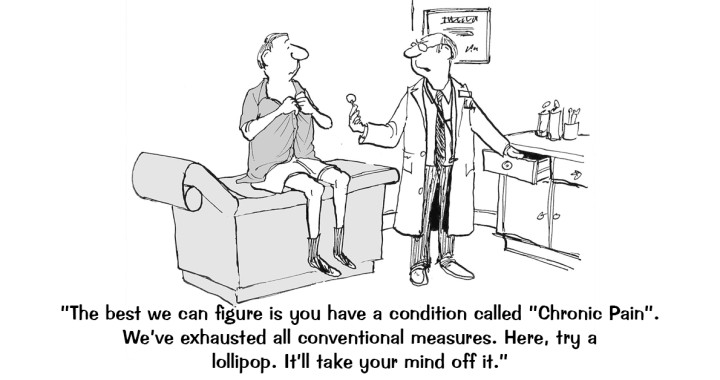Chronic Pain – A Diagnostic Trouble for Doctors
Before probing doctors’ hard times in making a confirmed diagnosis of chronic pain, let us get accustomed to what is a chronic pain?
Any pain that lasts more than 12 weeks is given a label of ‘chronic pain.’ It is very enigmatic to comprehend its exact course and intensity. Doctors are believed to be superior when it comes to the knowledge about body functions; therefore they are expected to figure out the chronic pain’s riddle. But, it confuses even the doctors when it comes to making an uncertain assertion that yes; it is chronic pain not a disease.
CAUSES:
There are numerous factors that can cause chronic pain. Any traumatic injury, nerve damage, simple aging and some pathology can impinge chronic pain on the senses.
DIFFRRENTIAL DIAGNOSES OF CHRONIC PAIN:
- Tendinitis
- Rheumatoid arthritis
- Multiple sclerosis
- Fibromyalgia
- Abdominal epilepsy
- Abdominal migraine
- Pelvic floor pain
- Substance abuse
- Faulty posture
- Chronic pelvic pain
HURDLES DOCTORS FACE WHILE DIAGNOSING:
Doctors face many hurdles in making a confirmed diagnosis about the cause. It is attributable to:
1) Lack of knowledge about the course and symptoms of some rare diseases.
2) Unavailable diagnostic tests for certain pathologies.
3) The anatomic diagnosis of some endodermal or mesodermal pathology is quite frantic to make.
4) Lack of information about how various pathologic processes excite the woeful nociceptors.
5) The inexperience and limited practice of the consulted physician.
6) Incomplete or superficial mode of physical examination.
7) Streak in skeptical history given by the patient.
8) Unwholesome skills of the doctor in history taking.
TECHNICAL ROADBLOCKS:
There is no pain quantifying machine yet invented nor is any ritual or code discovered that could measure the intensity of pain tolerated by patients. Scientists are also helpless to create a formula or potion that could help calculate the physical distress that any kind of pain gives to a sick person. In such circumstances, doctors rely on the verbal cues given by the patient himself.
It becomes difficult to work on the symptoms of pain told by miserable the patient. Hence, the physicians rely on the MRI, CT-scan and ultrasound to see for any clues of any progressing disease responsible for pain.
UNIVERSAL SIGNS OF DISEASES: A ROADBLOCK IN DIAGNOSIS
Dr. David Fleming, President of American College of Physicians state, ‘A lot of symptoms are nonspecific and variable depending upon the individual.’ This promotes the notion that every individual has a unique type of chronic pain and different disease presentations. This creates the major roadblock when tackling many diseased. Obviously research cannot be done on every patient individually to sort out the symptoms and pathophysiology of the ailment he is terribly bearing. Instead, research is made on a group of people to make universal conclusions about some discovered disease rather than on mere individuals.
LACK OF PSYCHOLOGICAL ASSESSMENT:
Another blockade in the way of diagnosis is that physicians often miss the psychosocial assessment of the patient. Very often the chronic pain is indicative of depression or high anxiety states.
